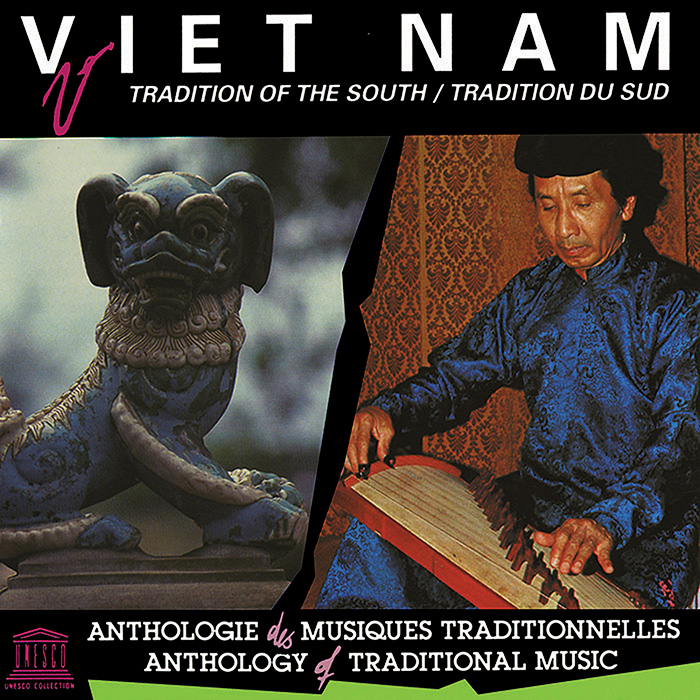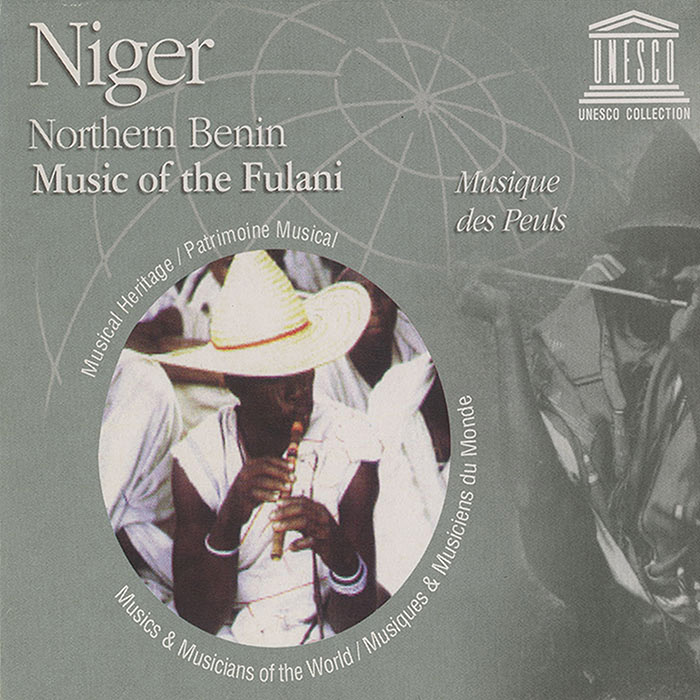-
UNESCO Collection Week 45: Entertainment Music from the Fulani and Viet Nam
This week’s UNESCO releases Viet Nam: Tradition of the South and Music of The Fulani-Niger/Northern Bénin document a specific genre: entertainment music. Although the musical traditions differ in instrumentation and are separated by over 6,000 miles, these recordings demonstrate the value of entertainment across cultures.
GUEST BLOG
By Keith Hadad
The albums Viet Nam: Tradition of the South and Music of The Fulani-Niger/Northern Bénin initially sound completely unrelated in everyway. They do, however, share one common trait that places them closer than the listener might imagine: both records are documents of music intended for entertainment.
Viet Nam: Tradition of the South consists of pieces played on a đàn tranh (a 17-stringed zither), a ty bà (a four-stringed lute like instrument) and a song lang (a type of woodblock). Each track has an improvised prelude, which gives way to excerpts from longer, older pieces, as is the tradition from the southern region of the country. According to the liner notes, the player is “demonstrating the possibilities of his instrument, the special features of his technique and the originality of his ornamentation.” Additionally, he “prepares his audience by creating an atmosphere conducive to the reception of the piece he is about to render.”Nearly all the songs are played at slow to medium tempos, allowing for each note to resonate and help create a feeling of pleasing tranquility or striking melancholy. For instance, from the third track, “Improvised prelude in the modal nuance Dao followed by an extract from the piece Ngu Cung Oao,” one might get the sense of slowly coasting down a river or looking out at a sunset from under the shade of a great tree. The intricate plucking of the đàn tranh by master musician Nguym-Vinh-aao and the particular scale and tuning that he uses all work together to delight and bring serenity to the listener’s ear.
AudioMusic of The Fulani-Niger/Northern Bénin is a sonic kaleidoscope, with different styles, sounds and instruments peppered throughout that are all unique to specific regions within the two titular countries. The album’s liner notes state that the Fulani are “scattered groups in Senegal, Northern Cameroon, Niger and northern Nigeria.” The liner notes go on to explain that “they do not form a race or an ethnic group in the proper sense, but a constellation of communities which—apart from differences due to the regions in which they have settled, their way of life and the influence of neighboring peoples—share a number of social and cultural characteristics.” Possibly predating Islamic cults, the Fulani originated—and still exist in some places—as nomadic herdsmen. Even though each satellite community of the Fulani is distinctive in its own way, the importance of music is shared between all of them. Each group bears a slight difference in their choice of instruments, including various handmade flutes, a calabash gourd, and an onndolooru (similar to the jaw harp) to name a few.AudioLike the music from South Vietnam, the main purpose of the Fulani's music is to entertain. Apart from a few light ceremonial instances, “music here is essentially an art intended to give pleasure, to provide entertainment,” as the liner notes mention. Through the use of pleasant sounds and vocals as well as the pentatonic scale, any casual listener can easily tell that the majority of these songs were created with the intention to amuse. For instance, “Ere Ere,” a lullaby for children, is as catchy and pleasing to the ear as any gentle pop song.
The songs here often showcase the skill of the musician, allowing for improvisation and emotional expression and sentiments to an audience. This expression of certain moods is communicated not by lyrics, but by instrumental tones, melodies, and tempos. The display of talent and vision shown on this album is born out of a desire to please and move oneself and others, instead of filling some sort of need within a community or religion.
These two albums, each sourced from very different countries, are equally fine examples of music produced with the purpose to entertain. Beyond that, the recordings from both releases showcase individualistic, artistic expressions that are so telling, that even as amusement, music can often be the best tool for communication.
Keith Hadad is a young writer located in northern New Jersey. His writing has appeared in Elmore Magazine, Optical Sounds Magazine and TheWaster.com. He also maintains a music blog at recordcratesunited.wordpress.com.
UNESCO Collection Week 45: Entertainment Music from the Fulani and Viet Nam | Smithsonian Folkways Recordings



